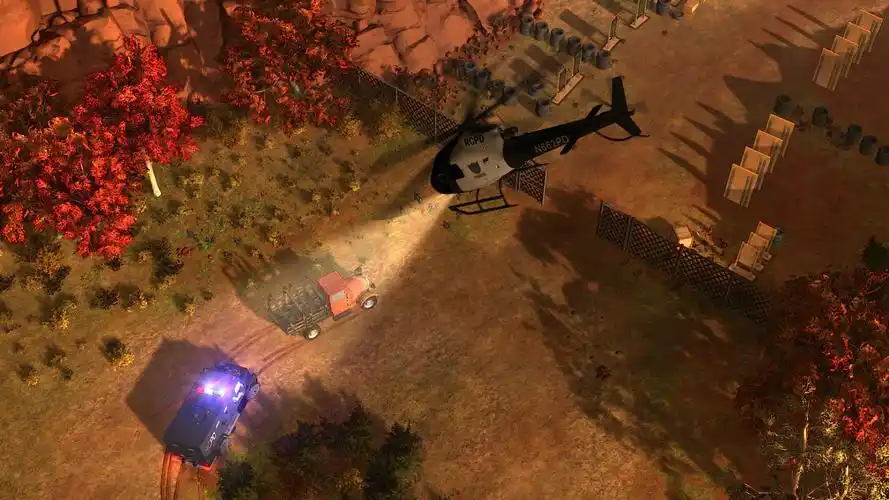Title: Beyond the Signpost: How Bus Stop Sign Installer Simulator VR's 'Place Missions' DLC Crafts an Unlikely Meditation
The virtual reality landscape is often dominated by the fantastical: epic sword fights, intergalactic warfare, and heart-pounding horror. Yet, a unique subgenre of simulation games has carved out a devoted following by finding profound engagement in the mundane. Bus Stop Sign Installer Simulator VR stands as a pinnacle of this movement, and its latest expansion, the 'Place Missions' DLC, doesn't just add content; it fundamentally refines the game's core philosophy, transforming a quirky job simulator into an unexpected and deeply resonant meditative experience.
For the uninitiated, the base game of Bus Stop Sign Installer Simulator VR tasks players with the seemingly straightforward job of installing bus stop signs across a variety of urban and rural environments. Using motion controllers, players physically unpack their truck, assemble signposts, mix and pour concrete, and carefully align and secure the signs. The genius of the original was in its hyper-attention to procedure and its tactile, physical feedback. The 'Place Missions' DLC expands this premise beyond simple installation into the nuanced realm of urban planning and community integration.
The DLC introduces a new campaign mode where players are no longer just contractors following a work order. Instead, they become consultants for the city's Urban Planning Department. Each mission begins not at a vacant lot, but in a virtual planning office. Here, players review 3D holographic maps of districts, studying pedestrian traffic flow data, analysing commuter density heatmaps, and reading citizen feedback petitions—some requesting a new stop for better access to a local park, others complaining about potential noise or obstruction.
This pre-installation phase is the DLC's first masterstroke. It contextualizes the labor. You are no longer just digging a hole; you are solving a tiny piece of a city's puzzle. A mission briefing might highlight an underserved suburban neighborhood with a high population of elderly residents, emphasizing the need for a well-placed, accessible stop with a bench. Another might task you with placing a stop in a dense historic district where you must avoid underground utilities and preserve the aesthetic integrity of the cobblestone streets. This layer of narrative and purpose elevates the subsequent physical work from repetitive task to meaningful action.
The "Place" in 'Place Missions' is a double entendre. It refers both to the act of placing the sign and the sense of place the DLC so expertly cultivates. New environments are a key feature. You'll find yourself installing signs in a windswept coastal town where the sound of gulls and crashing waves accompanies your work, on the edge of a misty redwood forest, and in a bustling downtown canyon where skyscrapers block the sun. Each location isn't just a visual backdrop; it affects gameplay. Coastal installations might require deeper concrete foundations to withstand salty erosion, while historic districts forbid powered drills, forcing you to use manual hand tools for a slower, more deliberate process.
This is where the VR medium and the DLC's mechanics fuse to create a zen-like state. The act of physically performing each step—selecting the correct shovel from your truck, feeling the controller vibrate as you break ground, carefully measuring the depth of your post hole, and steadying your virtual hands to pour the concrete without spilling—requires focus. The outside world melts away. There is no rush. The game actively punishes haste with failed inspections for crooked signs or improperly mixed cement. You are forced into a rhythm of deliberate, purposeful action.

The expansion adds over two dozen new tools and equipment options, from laser levels for perfect alignment to different types of signage for specific routes (express, local, school). This complexity could have led to frustration, but instead, it deepens the satisfaction. Mastering the workflow, organizing your toolbelt efficiently, and executing a flawless installation delivers a powerful sense of competence. It’s the video game equivalent of the satisfaction derived from a perfectly assembled piece of IKEA furniture or a well-tended garden, but amplified by the immersive power of VR.
Multiplayer, a new feature introduced in the DLC, surprisingly enhances rather than disrupts the meditative flow. Working cooperatively with a friend to install a sign requires non-verbal communication and synchronized effort. One player holds the post perfectly plumb while the other secures it. One mixes concrete while the other prepares the hole. It becomes a silent, efficient dance of shared purpose, a testament to how well-designed cooperative play can foster a unique form of quiet camaraderie.
Ultimately, the 'Place Missions' DLC understands that the soul of a simulator isn't in the spectacle of its tasks, but in the weight and meaning it assigns to them. By wrapping its core gameplay in a layer of civic purpose, environmental storytelling, and deeper mechanical complexity, it achieves something remarkable. It turns the act of installing a bus stop sign into a thoughtful, rewarding, and surprisingly peaceful journey. It’s a game about reading a community's needs and leaving a small, tangible mark of improvement upon it. In a world that often feels chaotic and digital, Bus Stop Sign Installer Simulator VR: Place Missions offers a virtual sanctuary of order, physicality, and quiet purpose, one perfectly placed signpost at a time.
Tags: #VRGaming #SimulationGames #BusStopSimulator #GamingDLC #MeditativeGaming #VirtualReality #PCVR #QuestVR #UnlikelyGames #GamingReview


















